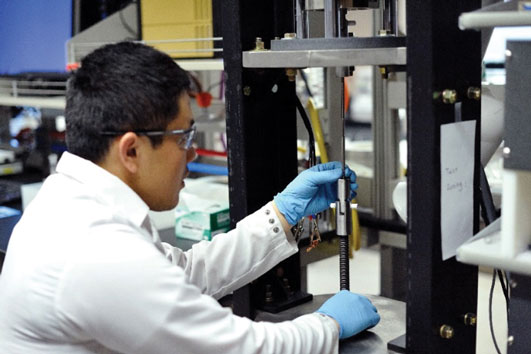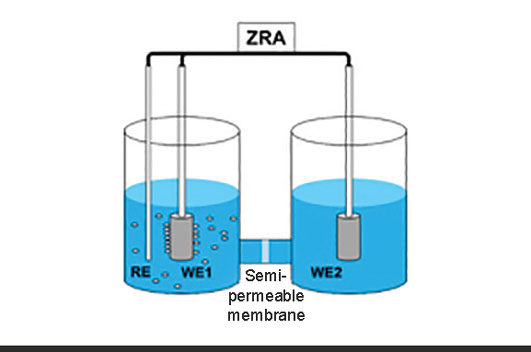Microbially influenced corrosion (MIC)
Researchers at UA are characterizing the influences of various microbiological processes on the corrosion of various alloys. We apply a unique combination of innovative electrochemical and microbiological techniques to determine mechanisms and early indicators of microbially influenced corrosion (MIC).
UA Research
- Apply a variety of approaches to understand the roles of microorganisms in corrosion
- Use model microorganisms, organisms isolated from systems experiencing MIC, and mixed microbial consortia from those systems
- Study microorganisms in situ, including measurements of chemical indicators of microbiological activities and culture-independent approaches to characterizing microbial communities and activities
- Utilize microscopic approaches to surface characterization, and electrochemical approaches to interrogating fluid chemistry and solid-solution interfaces (e.g., LP, EIS).
The "ZRA" Technique
- Interrogate MIC in a split-cell format
- Zero-resistance ammetry (ZRA) measurements are collected from two working electrodes (WE) deployed in separate chambers that are connected by a semipermeable membrane
- Mimic the conditions associated with heterogeneous coverage of metal surfaces by microbial biofilms, while adapting the physicochemical conditions to those observed in field settings
- Monitor processes that occur when metals are exposed to different environmental conditions
- UA researchers are currently using this technique to:
- Determine mechanisms of MIC
- Develop robust rate formulations for MIC
- Sensitively monitor MIC in real time

Researcher working with microorganisms

The "ZRA" Technique
Contact NCERCAMP
Address
264 Wolf Ledges Parkway
Akron, Ohio 44325
Telephone
Office: 330-972-6978
Fax: 330-972-5141
